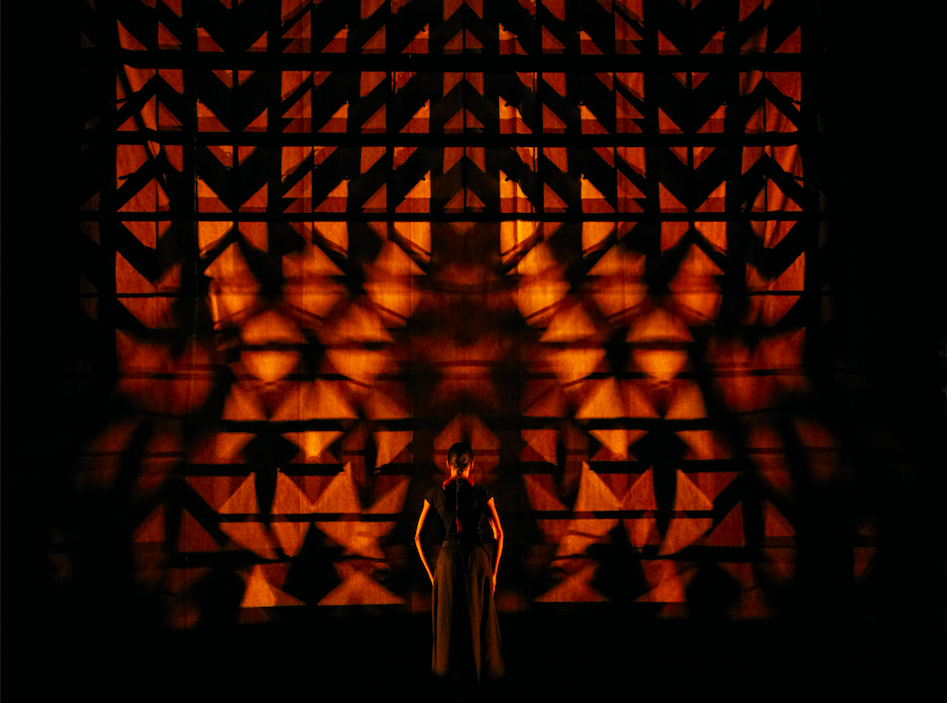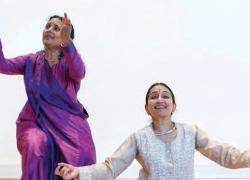aSH -Shantala Shivalingappa
Barbican Theatre, London
January 28, 2022
Reviewed by Donald Hutera
The programming of the London International Mime Festival (LIMF) is so varied, and its co-directors Helen Lannaghan and Joseph Seelig’s understanding of the word ‘mime’ so all-encompassing, that works featuring dance or choreographed movement are not at all uncommon. Consider this remarkable production which received its UK premiere during the festival’s 46th edition – a welcome return to live performances after a 2021 event that was by necessity strictly digital.
aSH was designed by its director, Aurélien Bory, a visionary Frenchman whose innately collaborative approach to theatre-making is no small influence on both his desire and ability to consistently ‘reinvent the wheel’ of what can occur onstage. It is the third and last of a trilogy of large-scale solos he has fashioned for – and with – unique female dancers. Created for Bory’s Toulouse-based Compagnie 111, this final solo may well be the most impressive. The title is derived from a bridging of the syllables of dancer and choreographer Shantala Shivalingappa’s first and last names, but it also refers to of one of this approximately hour-long production’s key materials.
‘I see a person like a landscape,’ Bory remarked during the post-show talk for aSH. Trained in the dance form kuchipudi, traditionally the preserve of men, Shivalingappa’s topographical history would have to include Madras (her birthplace) and Paris (where she grew up). She is a deceptively small, rail-thin figure but her power as a performer is immense. The strength of Shivalingappa’s physical presence is vital because in aSH she must share the stage with what looks like a giant sheet of silver paper, like aluminium foil, that hangs from a roller and in front of a massive wooden grid. Often the paper seems to be alive. It ripples like water, billows like a sail or looms over and around Shivalingappa like a tsunami-style wave. But its elemental force never consumes or defeats her. She defies and tames it through the geometry of her long, slim limbs and sheer groundedness, responding to its shape-shifting ‘behaviour’ with steadfast and immaculate control.
The ‘dance’ Shivalingappa does with the paper is akin to a duet. Other interactions transpire during this mesmerising visual/physical ceremony – one accompanied both by driving live percussion from the composer Loïc Schild, plainly visible stage right, and organic sound made by movement of both paper and grid (the latter of which Bory referred to as ‘a miked acoustic instrument’). At one juncture Shivalingappa brings centrestage what looks like a huge, wet shaving brush suspended from a rope, wiping it in an ever-widening circle on an ample swathe of paper that’s been securely lowered to the floor. This is where the ash comes in, distributed by her like flour atop the moistened paper via a big sifter. She then takes decisively placed, angled or spiraling steps over this substance, in the process creating with her feet a mandala (or, as specified in Bory’s note for the show’s digital freesheet, ‘a kolam, a flour drawing made on the ground in the morning and destroyed by the wind during the day’). When the paper is raised back up behind her she butts up against it, almost as if it might absorb her energy and become one with her. Beautiful, evanescent puffs of dust emanate from this implied transmutation.

aSH is an epic poetic spectacle, mysterious and open to interpretation while at the same time generously in plain view. Eventually the paper unspools, dropping to the floor and revealing the bare grid which lights up in changing patterns as if expressing the fickle impulses of some internal data processing. The performance has, in effect, taken us from suggestions of the natural world – that is, all the vast and often threatening storminess the paper seems to represent – to a reminder of modern technology and its putatively autonomous potency. A sizable journey it is too: lively yet contemplative, essentially absorbing and only very occasionally just a mite tedious, and all of it anchored by the superb Shivalingappa – who, most tellingly, said she perceives in aSH an embodiment of the contradictions inherent in the god Shiva. The show is, in short, divinely good.



















